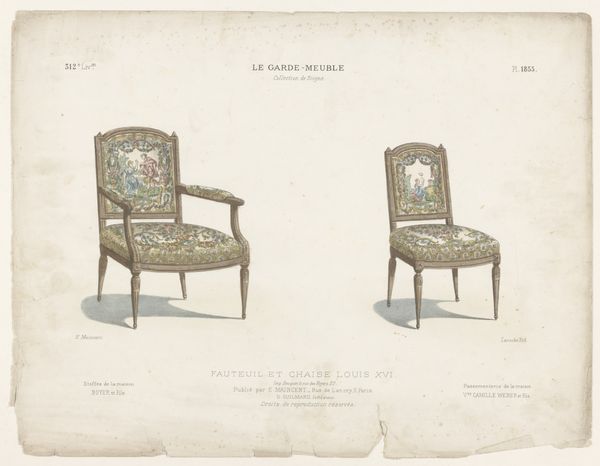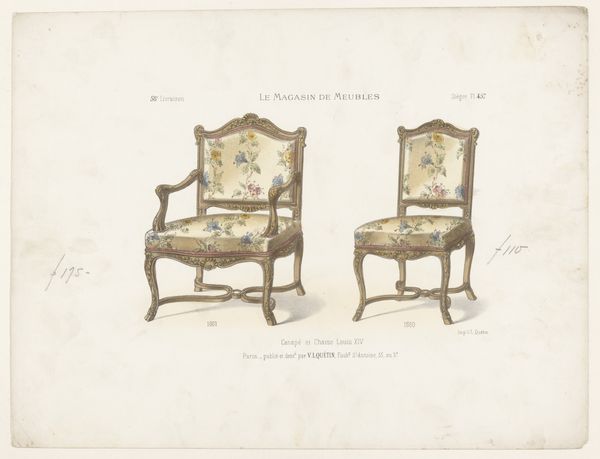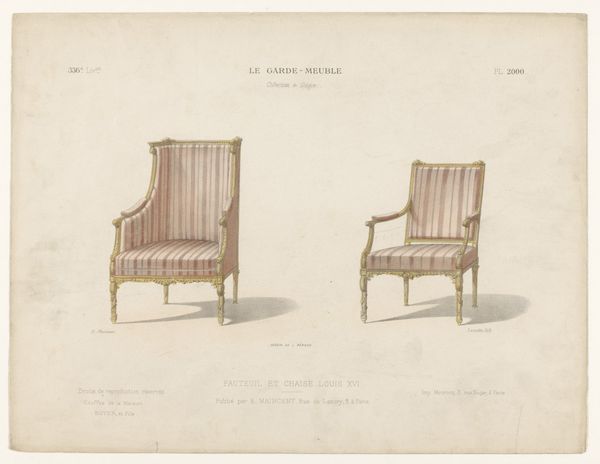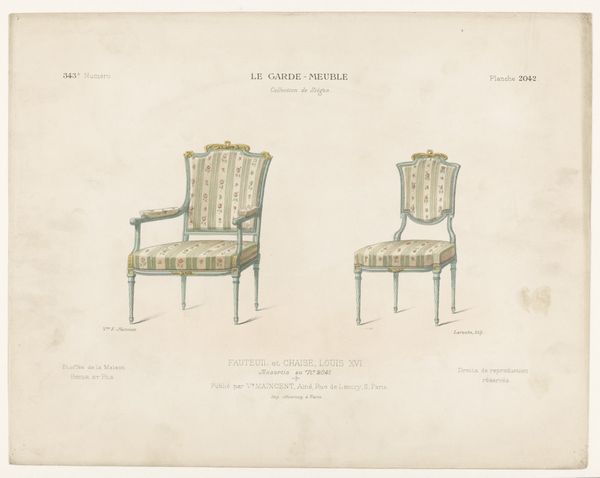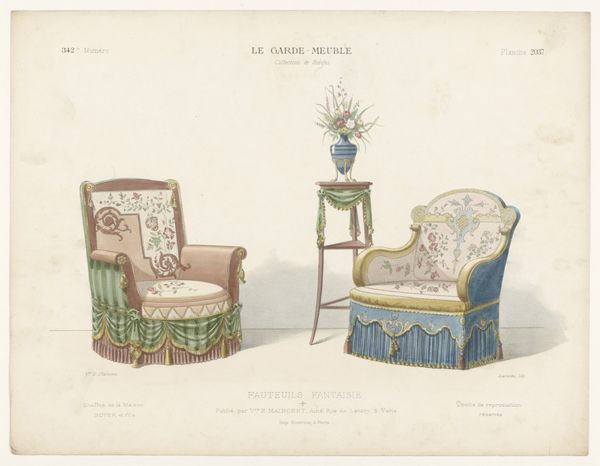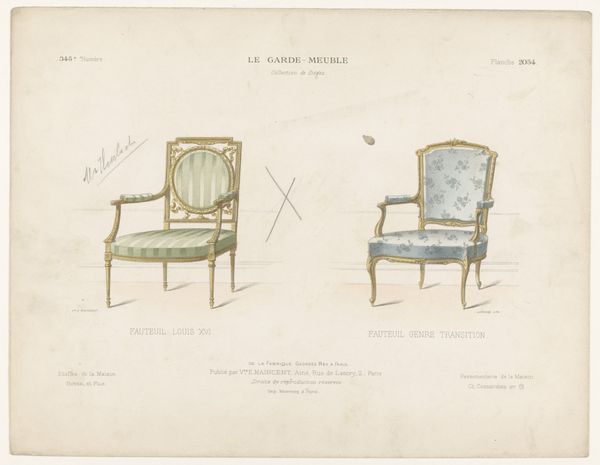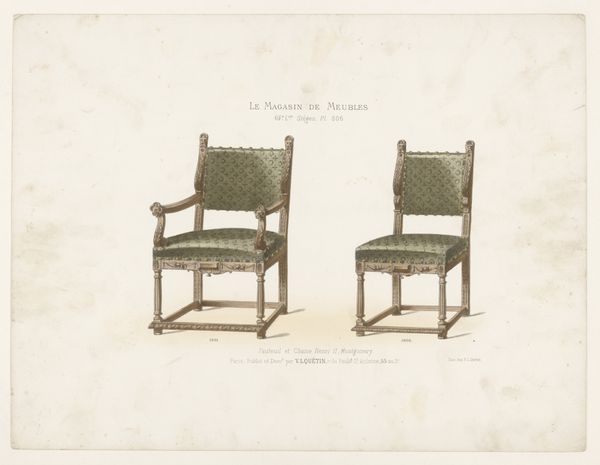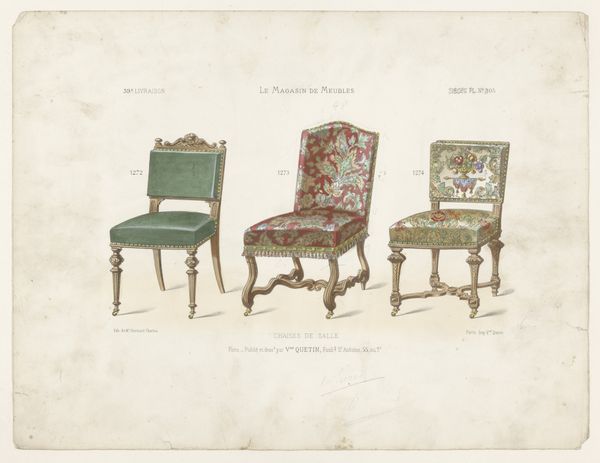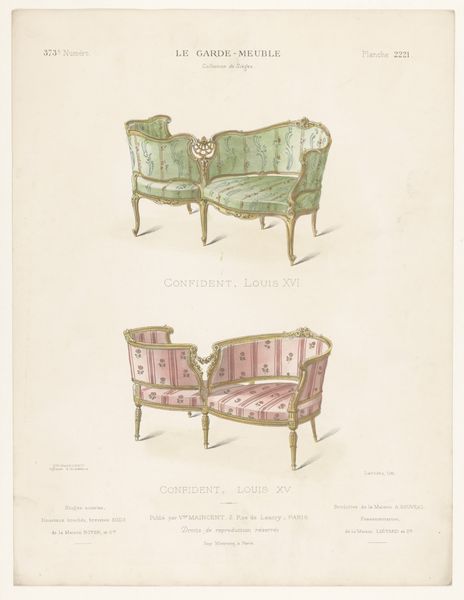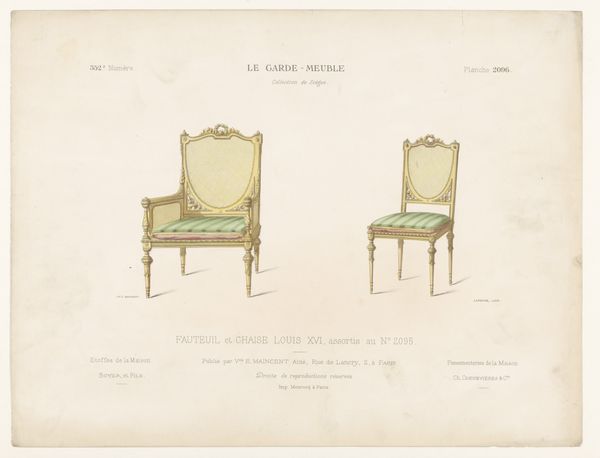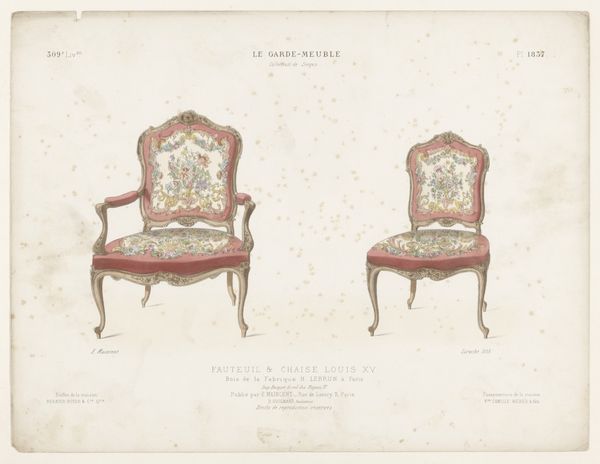
Dimensions: height 283 mm, width 358 mm
Copyright: Rijks Museum: Open Domain
Editor: So, here we have "Fauteuil en stoel" – or, armchair and chair – from between 1885 and 1895 by Léon Laroche. It appears to be a lithograph and pen drawing, perhaps also a watercolour illustration, showing two elegantly designed chairs. I'm struck by how delicate the lines are and how the pattern seems printed onto the upholstery. What stands out to you when you look at this piece? Curator: I immediately consider the means of production and the social context. This isn’t just a picture of chairs; it’s a record of labour, of the skilled artisans who produced furniture during this period. This print, reproduced in a large quantity, could've functioned as a sales catalogue or a pattern guide. Editor: A sales catalogue? That’s interesting! I hadn’t considered that. So, you're saying that the artwork’s purpose affects how we view it? Curator: Precisely! Consider the materials: pen, lithography, possibly watercolor. These choices aren't arbitrary. Lithography allowed for relatively mass production compared to individual craftsmanship, suggesting a growing market and shifting demands in furniture consumption. We need to look at how it challenges the distinction between high art and industrial design, no? How available was this design? Who could access this type of luxury? Editor: That’s a perspective shift I hadn’t really thought of – that even something as seemingly simple as a furniture design print reflects social and economic changes of the time. So much for a simple pretty illustration. Curator: It prompts us to think critically about who these objects were for, how they were made, and what systems of labor and consumption they represent. Editor: Absolutely. I’ll never look at a simple print the same way again.
Comments
No comments
Be the first to comment and join the conversation on the ultimate creative platform.
